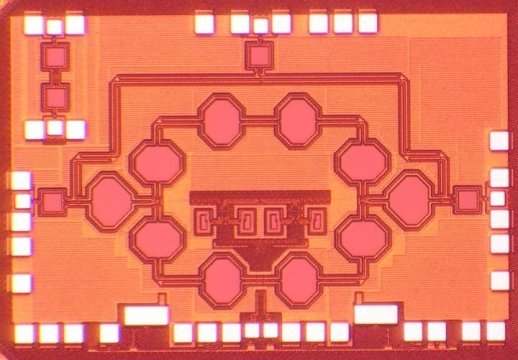Engineers invent breakthrough millimeter-wave circulator IC
Researchers are first to demonstrate a circulator on a silicon chip at mm-wave frequencies that enables nonreciprocal transmission of waves: device could enable two-way radios and transform 5g networks, self-driving cars, and virtual reality.

Columbia Engineering researchers, led by Harish Krishnaswamy, associate professor of electrical engineering, in collaboration with Professor Andrea Alu's group from UT-Austin, continue to break new ground in developing magnet-free non-reciprocal components in modern semiconductor processes. At the IEEE International Solid-State Circuits Conference in February, Krishnaswamy's group unveiled a new device: the first magnet-free non-reciprocal circulator on a silicon chip that operates at millimeter-wave frequencies (frequencies near and above 30GHz). Following up on this work, in a paper published today in Nature Communications, the team demonstrated the physical principles behind the new device.
Most devices are reciprocal: signals travel in the same manner in forward and reverse directions. Nonreciprocal devices, such as circulators, on the other hand, allow forward and reverse signals to traverse different paths and therefore be separated. Traditionally, nonreciprocal devices have been built from special magnetic materials that make them bulky, expensive, and not suitable for consumer wireless electronics.
The team has developed a new way to enable nonreciprocal transmission of waves: using carefully synchronized high-speed transistor switches that route forward and reverse waves differently. In effect, it is similar to two trains approaching each other at super-high speeds that are detoured at the last moment so that they do not collide.
The key advance of this new approach is that it enables circulators to be built in conventional semiconductor chips and operate at millimeter-wave frequencies, enabling full-duplex or two-way wireless. Virtually all electronic devices currently operate in half-duplex mode at lower radio-frequencies (below 6GHz), and consequently, we are rapidly running out of bandwidth. Full-duplex communications, in which a transmitter and a receiver of a transceiver operate simultaneously on the same frequency channel, enables doubling of data capacity within existing bandwidth. Going to the higher mm-wave frequencies, 30GHz and above, opens up new bandwidth that is not currently in use.
"This gives us a lot more real estate," notes Krishnaswamy, whose Columbia High-Speed and Mm-wave IC (CoSMIC) Lab has been working on silicon radio chips for full duplex communications for several years. His method enables loss-free, compact, and extremely broadband non-reciprocal behavior, theoretically from DC to daylight, that can be used to build a wide range of non-reciprocal components such as isolators, gyrators, and circulators.
Nice..